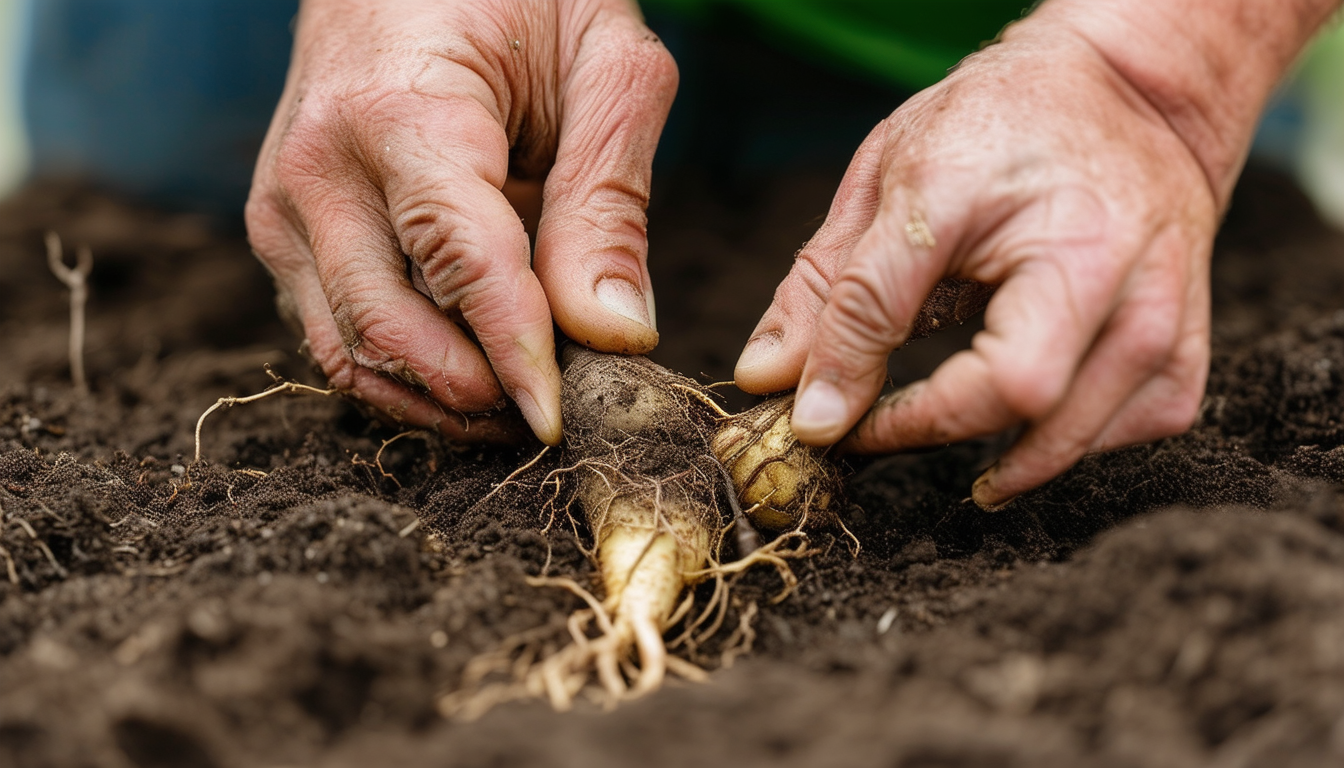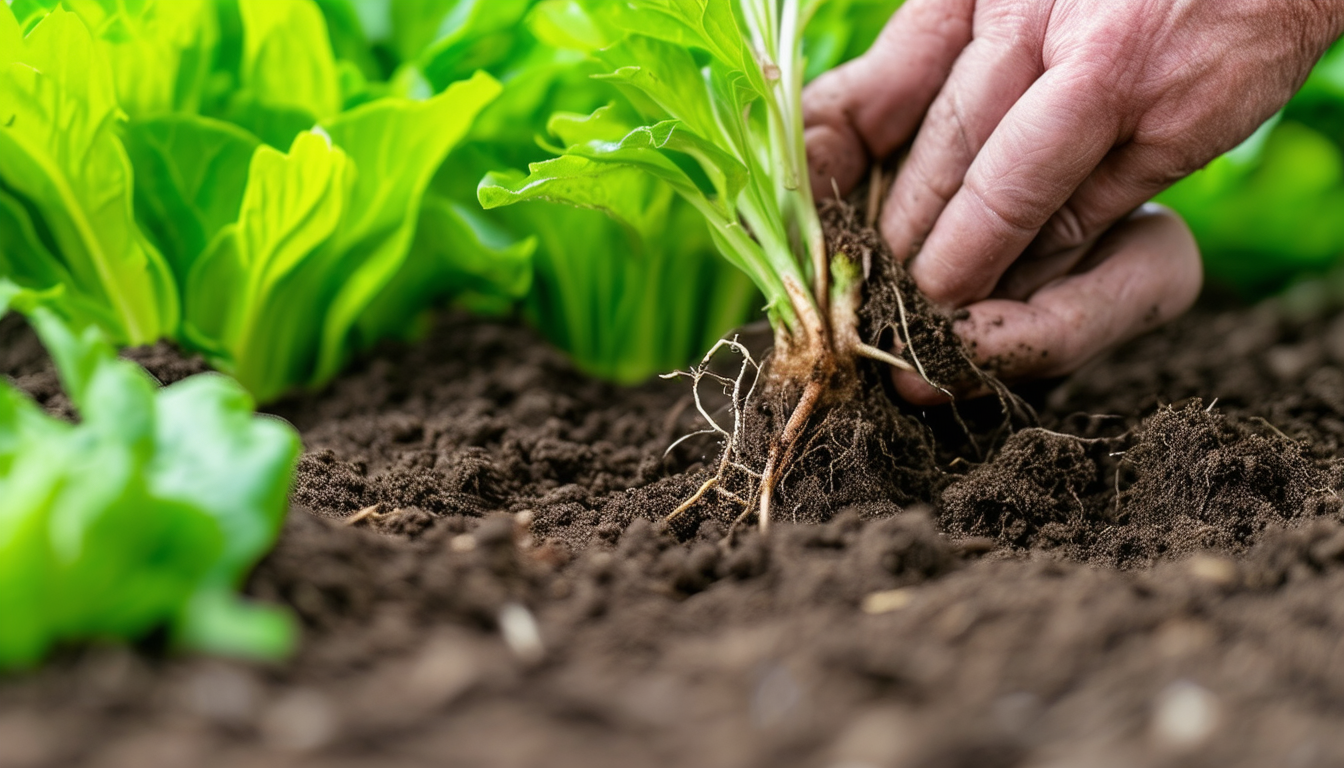
Unlock the secret to endless garden growth by mastering the art of propagating plants from tuberous roots.
Intro - Understanding Tuberous Roots: The Key to Successful Propagation
Tuberous roots are unique underground plant structures that store nutrients and energy, making them excellent candidates for propagation. Unlike tubers, which are modified stems, tuberous roots are thickened roots that can give rise to new plants. Understanding the nature of these roots is essential for successful propagation.
By mastering the art of propagating from tuberous roots, you can continuously expand your garden and enjoy a thriving array of plants. This guide will help you understand the process and provide you with the knowledge needed to succeed.
Essential Tools and Materials for Tuberous Root Propagation
Before you start, gather the necessary tools and materials to ensure a smooth propagation process. You'll need a sharp knife or pruning shears, a clean cutting surface, rooting hormone (optional but recommended), pots or trays with well-draining soil, and labels for your new plants.
Having these tools ready will make the propagation process more efficient and increase your chances of success. Proper preparation is key to nurturing your new plants from tuberous roots.
5 Step Guide to Propagating Plants from Tuberous Roots
1. **Choose Healthy Roots**: Select healthy, disease-free tuberous roots from a mature plant. Look for firm, plump roots with visible 'eyes' or growth nodes.
2. **Cut the Roots**: Using a sharp knife, cut the tuberous roots into sections, ensuring each piece has at least one growth node. This is where new shoots will emerge.
3. **Apply Rooting Hormone**: Dip the cut ends of the root sections into rooting hormone to encourage faster root development and reduce the risk of rot.
4. **Plant the Sections**: Plant the root sections in pots or trays filled with well-draining soil. Place the sections horizontally, covering them lightly with soil.
5. **Water and Care**: Water the soil gently to keep it moist but not waterlogged. Place the pots in a warm, well-lit area and keep an eye on the moisture levels as the roots start to develop.
Examples of plants to propagate from Tubers
Many plants can be propagated from tuberous roots, offering a diverse array of options for your garden. Some popular examples include:
- **Dahlias**: Known for their vibrant blooms, dahlias are a favorite among gardeners.
- **Sweet Potatoes**: Not only a delicious crop, but sweet potatoes also have beautiful foliage.
- **Begonias**: These versatile plants offer stunning flowers and foliage, perfect for both indoor and outdoor gardens.
Experimenting with different types of tuberous plants can add variety and beauty to your gardening endeavors.
Common Mistakes to Avoid When Propagating from Tuberous Roots
While propagating from tuberous roots is relatively straightforward, there are common mistakes that can hinder success. Avoid these pitfalls to ensure healthy plant growth:
- **Overwatering**: Excessive moisture can cause root rot. Ensure your soil is well-draining and water sparingly.
- **Using Diseased Roots**: Always select healthy roots for propagation. Diseased roots can spread infections to new plants.
- **Ignoring Growth Nodes**: Make sure each root section has at least one growth node. Without these, the roots won't develop into new plants.
By being mindful of these common mistakes, you can improve your chances of successful propagation and enjoy a thriving garden.
Caring for Your New Plants: Tips for Thriving Growth
Once your new plants start to grow, it's important to provide them with the right care to ensure they thrive. Here are some tips:
- **Light**: Ensure your new plants receive adequate light. Most tuberous plants prefer bright, indirect sunlight.
- **Watering**: Keep the soil consistently moist but not waterlogged. Adjust watering frequency based on your plant's needs and the environment.
- **Fertilizing**: Use a balanced, water-soluble fertilizer to provide essential nutrients. Fertilize every few weeks during the growing season.
- **Pest Control**: Monitor your plants for pests and treat any infestations promptly with appropriate methods.
With the right care, your new plants will flourish and bring beauty to your garden for years to come.
FAQ
How do you propagate tuberous roots? To propagate tuberous roots, cut healthy roots into sections with growth nodes, plant them in well-draining soil, and keep the soil moist.
How to propagate plants from tubers? Cut tubers into pieces with at least one eye or bud, plant them in soil, and water regularly to encourage growth.
How are tuberous root crops propagated? Tuberous root crops are propagated by cutting the roots into sections with growth nodes and planting them in soil.
What is the difference between tubers and tuberous roots? Tubers are modified stems that store nutrients, while tuberous roots are thickened roots that perform a similar function.
Can you propagate from just roots? Yes, tuberous roots can be propagated by cutting them into sections with growth nodes and planting them.
What is the difference between taproot and tuberous root? Taproots are the main root growing vertically down, while tuberous roots are thickened lateral roots that store nutrients.
Can you grow plants from tubers? Yes, many plants can be grown from tubers by planting sections with growth nodes in soil.
Can you put cuttings straight into soil? Yes, cuttings from tuberous roots can be placed directly into well-draining soil to encourage growth.
How do you take cuttings from rhizomes? Cut healthy rhizomes into sections with nodes, plant them in soil, and keep the soil moist to encourage growth.
Is potato a root tuber? No, potatoes are stem tubers, not root tubers.
What is the modification of tuberous roots? Tuberous roots are modified to store nutrients and energy, allowing the plant to survive adverse conditions.
What is an example of tuber propagation? Dahlias are a common example of plants propagated from tuberous roots.
Is a potato a tuberous root? No, a potato is a stem tuber.
Is carrot a tuberous root? No, a carrot is a taproot, not a tuberous root.
Is Dahlia a tuberous root? Yes, Dahlias have tuberous roots that can be propagated.
What is the difference between a rhizome and a tuberous root?Rhizomes are horizontal underground stems, while tuberous roots are thickened root structures.
Which is better taproot or fibrous root? Each has its advantages: taproots anchor plants deeply and access deep water, while fibrous roots provide stability and absorb surface nutrients.



